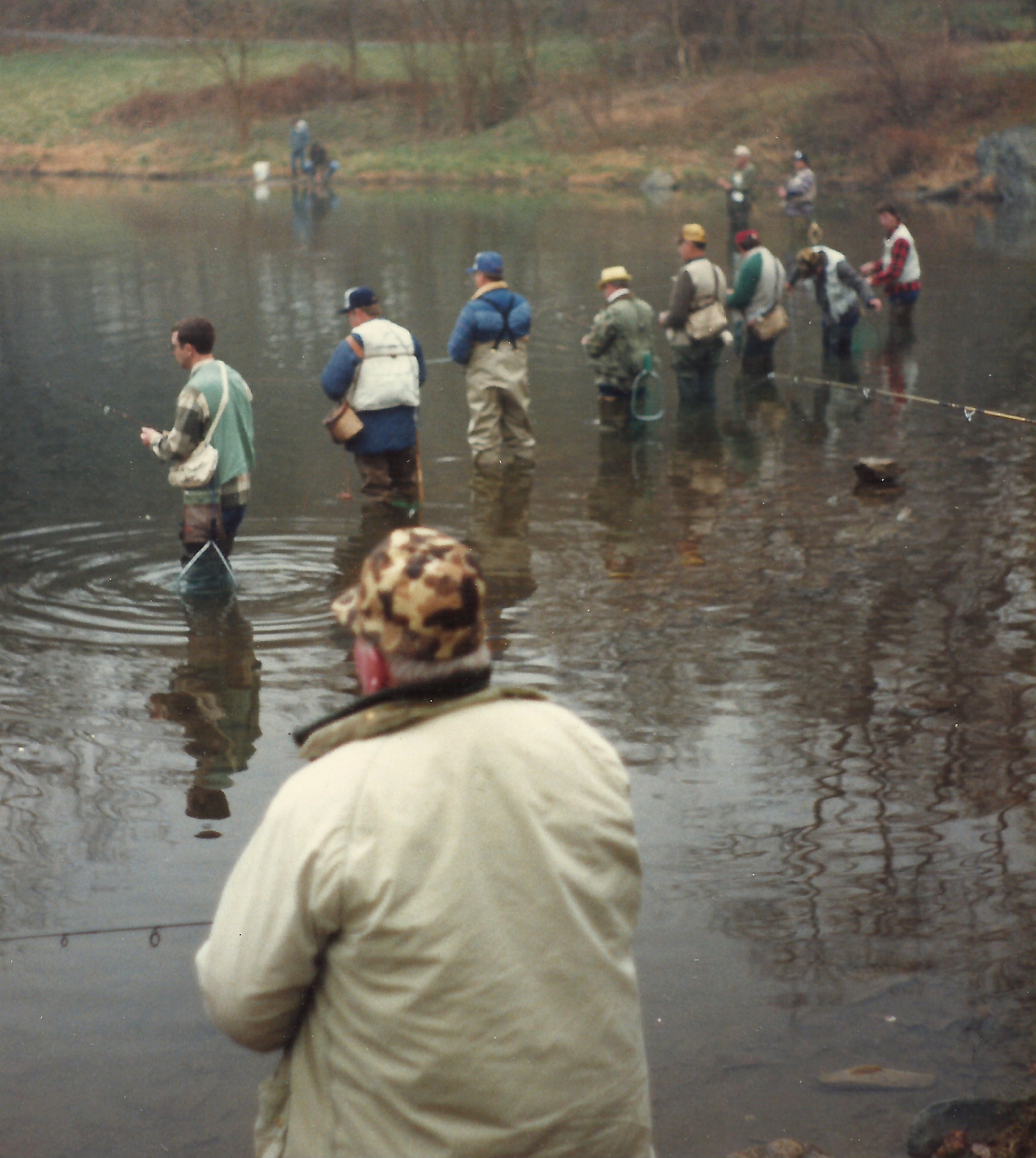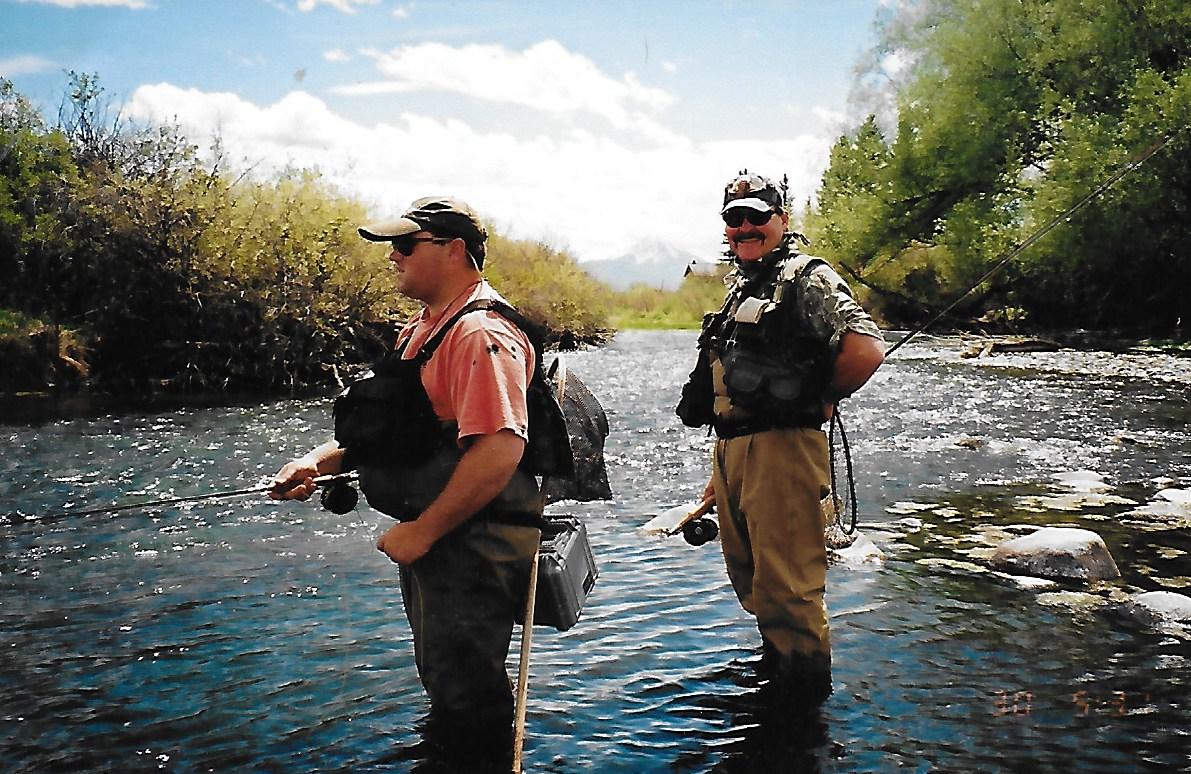 It used to be that most new fishermen were gradually introduced to the sport of fly fishing by a family member or friend who had a fishing background. Various rules of appropriate behavior would be acquired over time. These days, we welcome many new folks to the sport with no tradition, or mentors to rely on for guidance. Since these lessons have not been learned, “Stream Rage” incidents arise.
It used to be that most new fishermen were gradually introduced to the sport of fly fishing by a family member or friend who had a fishing background. Various rules of appropriate behavior would be acquired over time. These days, we welcome many new folks to the sport with no tradition, or mentors to rely on for guidance. Since these lessons have not been learned, “Stream Rage” incidents arise.
After the movie “And a River Runs Through it”, and the recent “Mending the Line” have been shown, Fly Fishing has become the new cool thing to do. Guides and outfitters have had full schedules meeting the demand of this growing market. The increased pressure has also negatively impacted the wellness of the fish and watersheds. Even with proper Catch and Release skills, a fish can only be caught so many times, at best.
The rules of streamside behavior are not that complicated. Most rules are just common sense. Mostly they revolve around being courtesy, respectful, and considerate of others sharing the stream. Treat others like you wish to be treated. The Orvis company, a well-respected fly-fishing business, has listed clear limits on fishing manners that matter.
- “A section of water belongs to the first fisherman fishing it. It is inconsiderate to crowd him and just how close an approach is permissible is an obvious variable.
- A slow-moving or stationary fisherman has every right to remain just where he is. If you are moving, leave the water and walk around him, being certain not to disturb his fishing or the water he might be working. In a similar vein, a fisherman may be resting a pool or planning his next move. It is still his water, and you should not jump in without his permission.
- A fisherman working in an upstream direction has the right of way over someone coming downstream. Wading upstream against the current forces you to move slowly, cover less water, and you are approaching the fish from behind. The fisherman working in a downstream direction covers more water, more quickly, and has the potential to disturb more water. For instance, careless wading could send silt or debris washing downstream to alarm fish that someone else is working over.
- Many streams flow through private property. Recognize that access is a privilege, not a right. Respect private property. If unsure about access, ask the landowner politely. On farm properties: don’t trample crops, disturb livestock, or leave gates open.
- Leave no litter at streamside. In fact, get in the habit of picking up discarded monofilament, cans, and other trash, carrying them out to be discarded properly.
- Recognize that skilled anglers and/or heavy fishing pressure with excessively liberal limits can greatly reduce the available fish populations in any stream section unless voluntary restraint is practiced. A legal limit is not a quota. Let your fishing motto be: “Limit your kill; don’t kill your limit.” Orvis encourages the catch-and-release philosophy of angling, allowing fish to mature, reproduce, and live to challenge other anglers in the future.
- Multiple recreational use of streams is common. We may share the resource with tubes and canoes. It is the responsibility of the canoer to recognize that the angler has established a position before the canoe floated into view. The canoer should try to pass behind the angler. If space doesn’t permit this, the canoer should float by quietly and with minimum disturbance.”
Setting a personal Catch Limit is important, and a new way of addressing ethical Fly Fishing. Just because you can catch 50 trout a day, should you? Perhaps just target some fish and show restraint. Even if you are expert at Catch and Release, some mortality will occur. Studies have shown that at least one in ten fish caught and released will die. This means that during a 50 fish day, at least 5 fish could perish from the resource.
Learn and practice proper Catch and Release skills. This applies to how long you fight a fish, how to touch, net, handle, and photograph the catch. Rules are different on hot and cold days. A sharp hook kills fewer fish. Forceps help remove hooks with minimal damage. A wet net and hand are vital when touching a fish. Once the fish is hooked, the clock is running. Too much fighting, and out of the water photo sessions, apply too much stress to a fish. Even if the fish swims away, the damage is done.
Fly Fishing is supposed to be FUN! If you are getting stressed out over your fishing experiences, then you are doing it wrong. Become an ethical, knowledgeable, and well behaved representative of our fishing family.
Be the Best Fly Fishing ambassador that you can be.
Montana Grant




